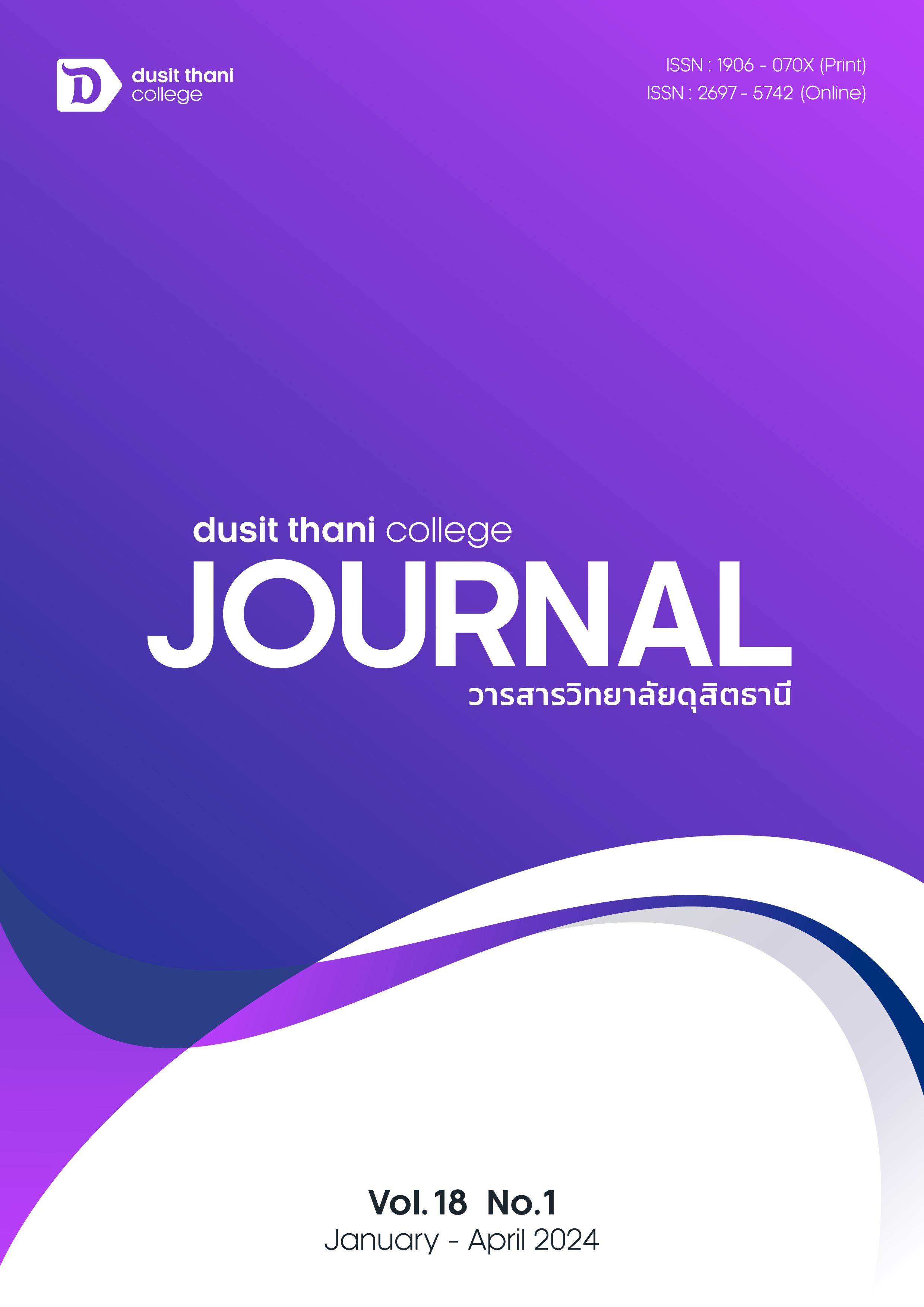ผลของเนื้อส้มโอปั่นและเปลือกส้มโอต่อการยอมรับน้ำจิ้มซีฟู้ด
Main Article Content
บทคัดย่อ
งานวิจัยนี้มีวัตถุประสงค์เพื่อศึกษาผลิตภัณฑ์น้ำจิ้มซีฟู้ดจากเนื้อส้มโอปั่นและเปลือกส้มโอ โดยพบว่าเนื้อส้มโอปั่น จะมีปริมาณความชื้น โปรตีน ไขมัน เถ้า คาร์โบไฮเดรตรวม และใยอาหาร เท่ากับ ร้อยละ 89.80, 0.53, 0.00, 0.60, 9.04 และ 1.75 ตามลำดับ และให้พลังงานต่อ 100 กรัมเท่ากับ 38.28 กิโลแคลอรี ในขณะที่เปลือกส้มโอที่ผ่านการอบไล่ความชื้นบางส่วนจะมีปริมาณความชื้น โปรตีน ไขมัน เถ้า คาร์โบไฮเดรตรวม และใยอาหาร เท่ากับร้อยละ 57.23, 0.86, 0.00, 1.54, 40.37 และ 21.39 ตามลำดับ การผลิตผลิตภัณฑ์น้ำจิ้มซีฟู้ดโดยศึกษาการเสริมเนื้อส้มโอปั่นที่ปริมาณร้อยละ 0, 25, 50 และ 75 ของน้ำหนักส่วนผสมทั้งหมด และศึกษาการเสริมเปลือกส้มโอในน้ำจิ้มซีฟู้ดจากเนื้อส้มโอปั่นที่ปริมาณร้อยละ 0, 10, 15 และ 20 ของน้ำหนักส่วนผสมทั้งหมด พบว่า ผู้ทดสอบให้การยอมรับการเสริมเนื้อส้มโอปั่นที่ระดับร้อยละ 50 และปริมาณเปลือกส้มโอที่ระดับร้อยละ 15 ไม่แตกต่างจากสูตรพื้นฐาน และเมื่อวิเคราะห์องค์ประกอบทางเคมี พบว่าการใช้เนื้อส้มโอปั่นและเปลือกส้มโอทำให้น้ำจิ้มมีความชื้นที่ลดลง แต่ในขณะเดียวกันใยอาหาร และคาร์โบไฮเดรตรวมมีปริมาณเพิ่มขึ้น และเมื่อนำไปวิเคราะห์ทางจุลชีววิทยาพบว่าอยู่ในเกณฑ์มาตรฐานกำหนด
Article Details

อนุญาตภายใต้เงื่อนไข Creative Commons Attribution-NonCommercial-NoDerivatives 4.0 International License.
นโยบายการพิจารณากลั่นกรองบทความ
- บทความวิจัยและบทความวิชาการทุกเรื่องที่จะได้รับการตีพิมพ์ต้องผ่านการพิจารณากลั่นกรองโดยผู้ทรงคุณวุฒิ (Peer Review) ในสาขาที่เกี่ยวข้อง จำนวน 3 ท่าน/บทความ
- บทความ ข้อความ ภาพประกอบและตารางประกอบที่ลงตีพิมพ์ในวารสารเป็นความคิดเห็นส่วนตัวของผู้เขียน กองบรรณาธิการไม่จำเป็นต้องเห็นด้วยเสมอไป และไม่มีส่วนรับผิดชอบใด ๆ ถือเป็นความรับผิดชอบของผู้เขียนแต่เพียงผู้เดียว
- บทความที่จะได้รับการตีพิมพ์จะต้องไม่เคยตีพิมพ์ เผยแพร่ที่ใดมาก่อน และไม่อยู่ระหว่างการพิจารณาของวารสารฉบับอื่น หากตรวจสอบพบว่ามีการตีพิมพ์ซ้ำซ้อน ถือเป็นความรับผิดชอบของผู้เขียนแต่เพียงผู้เดียว
- บทความใดที่ผู้อ่านเห็นว่าได้มีการลอกเลียนหรือแอบอ้างโดยปราศจากการอ้างอิง หรือทำให้เข้าใจผิดว่าเป็นผลงานของผู้เขียน กรุณาแจ้งให้กองบรรณาธิการวารสารทราบจะเป็นพระคุณยิ่ง
เอกสารอ้างอิง
Adisakwattana, S. (2015). Pomelo powder extract contains antioxidants and reduced fat absorption.
Retrieved from: https://fic.nfi.or.th/technologyandinnovation_ detail.php?smid=103.
AOAC official methods of analysis. 19th ed. Gaithersburg Maryland: Association of Official Chemists International; 2012.
Appamaye, S. (2009). A tasty recipe for dipping sauce. Bangkok: Wadsilp Publishing.
Chaiwong, S. and Theppakorn, T. (2010). Flavonoids in Thai Pummelo. The Journal of Applied Science. 9(2). 79-89.
Department of Agriculture, Ministry of Agriculture and Cooperatives. (2022). Pomelo production technology in the lower northern region to raise standards and quality. Retrieved from: https://www.doa.go.th/
share/attachment.php?aid=3060.
Ghosh, U. and Gangopadhyay, H. (2003). Reduction of bitter component of pomelo juice by chemical treatment and immobilized enzyme. Indian Journal of Chemical Technology. 10. 701-704.
Kongsri, S. and Nartvaranant P. (2019). Comparison of pummelo identity cv. “Thong Dee” and “Khaonamphueng” with different sources of cultivars using AFLP marker. Khon Kaen Agriculture Journal. 47(1). 123-132.
Maeban (2020). Dipping sauce, spicy salad dressing, seasoning sauce. Bangkok: Maeban Publishing.
Nakhin, T. (2010). An excellent recipe for spicy salad dish. Bangkok: Sangdad Publishing.
Naowakul, B. (2010). Production of dietary fiber from pomelo’s albedo with reduced bitterness and Its utilization in dairy ice cream. (Master of Science). Chiang Mai: Chiang Mai University.
Phianmongkhol, A. (2006). Production of dietary fiber powder from the pomace of citrus cv. khieo-waan, cv. sai-nampung, cv. sai-thong, and inner pomelo peel. Faculty ofAgroIndustry. Chiang Mai University.
Pichaiyongvongdee, S. and R. Haruenkit. (2009). Comparative studies of limonin & naringin distribution in different parts of pummelo [Citrus grandis (L.) Osbeck] cultivars grown in Thailand. Kasetsart Journal (Natural Science) 43: 28–36.
Pomnoi, W. (2021). The benefits of bitter vegetables. Retrieved from: https://www.thaihealth.or.th/.
Poonnakasem, N. (2016). Development of Butter Cookie with Fiber from Pomelo Albedo. SDU Research
Journal. 9(1). 35-49.
Puri, M., Marwaha, S.S., Kothari, R.M. and Kennedy, J.F. (1996). Biochemical basis of bitterness in citrus fruit juices and biotech approaches for debittering. Critical Reviews in Biotechnology 16. 145–155.
Research center of major crop production in Nakhon Pathom. (2018). Nakhonchaisri Pomelo. Retrieved from: https://dept.npru.ac.th/agridvnp/index.php?.
Saengthongpinit, W. (2008). Production and Properties of Dietary Fiber from Pomelo Albedo for Food Products. The 1st NPRU Academic Conference 2008.
Saengthongpinit, W. (2013). Supplementation of fiber from pomelo albedo in Moo-yaw. The 48th Kasetsart University Annual Conference. 1-8.
Salee, M. (2015). The appeal of combining various flavored dipping sauces with Thai cuisine. Retrieved from: https://www.het.rmutt.ac.th/?p=29574.
Siwnguan K., Phugan P., Compen A. and Inpatom P. (2017). Using of Pomelo Albedo Powder as Dietary Fiber in Cracker Products. PSRU Journal of Science and Technology. 2(1). 14-23.
Sujarittaweesuk, U., Ratanachinakorn B. and Jangchud A. (2003). Pummelo Juice Debittering. The Agricultural Science Journal. 34(4-6). 100-103.
Susomboon, S. (2020). the Ministry of Commerce sees opportunities for Thai condiments in the COVID-19. Retrieved from: https://marketeeronline.co/archives. /162960.
Thai Community Product Standards. (2003). Thai seafood sauce (1159/2549). Thai Industrial Standards Institute
Thonabut, J. (2021). Development of Khanom Sommanat supplemented with pomelo albedo fibers. VRU Research and Development Journal. 16(1). 1-15.
Trade Policy and Strategy Office. (2023). Deputy Minister for Commerce suggesting to expedite penetration of new fruit export markets and promote local consumption. Retrieved from: https://tpso.go.th/news/2312-0000000016.


